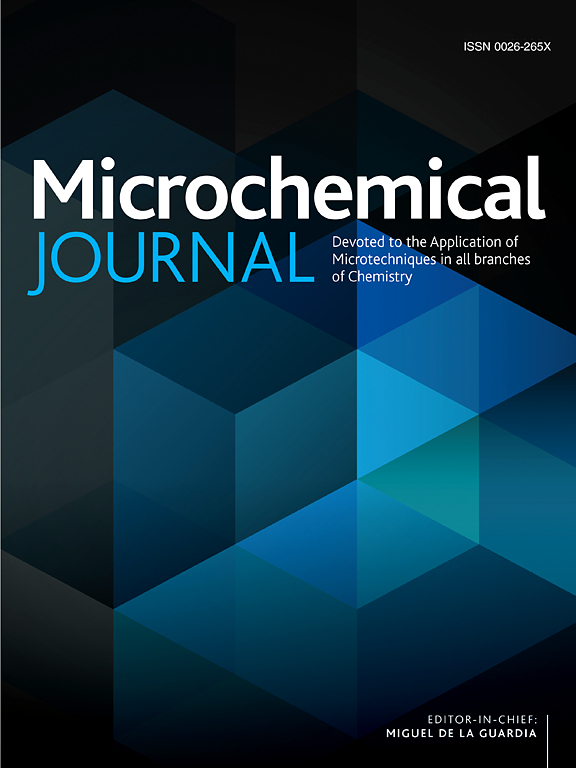宠物食品中维生素的测定:快速灵敏的在线固相萃取和切心二维液相色谱法
IF 4.9
2区 化学
Q1 CHEMISTRY, ANALYTICAL
引用次数: 0
摘要
建立了在线固相萃取(online固相萃取)和切心二维液相色谱(2D-LC)相结合的同时测定7种脂溶性维生素的自动方法,并在宠物食品中进行了验证。皂化后的样品溶液直接注入我们的在线SPE和心脏切割2D-LC系统进行富集、纯化、分离和定量。以五氟苯基(PFP)为第一柱分析维生素A和E异构体。用C18作为第二柱分析维生素D2和D3。结果显示线性良好(R2 >;0.9964),重现性好(RSD <;维生素A、D2、D3和α -、β-、γ-、δ-E的定量限(S/ n = 10:1计算)分别为0.24、0.09、0.09、2.4、2.4、2.4和2.4 μg/g。加标回收率为80.6% ~ 104.0%。该方法大大简化了脂溶性维生素标准分析方法的分析工作流程,提高了分析效率。本文章由计算机程序翻译,如有差异,请以英文原文为准。

Vitamin determination in pet food: A fast and sensitive online solid-phase extraction and heart-cutting 2D liquid chromatography method
An automatic method that combines online solid-phase extraction (online SPE) and heart-cutting two-dimensional liquid chromatography (2D-LC) was developed to determine seven fat-soluble vitamins simultaneously and was validated in pet food. The saponified sample solution was injected directly into our combined online SPE and heart-cut 2D-LC system for enrichment, purification, separation, and quantification. Vitamin A and E isomers were analyzed using pentafluorophenyl (PFP) as the first column. Vitamins D2 and D3 were analyzed using C18 as the second column. The results showed good linearity (R2 > 0.9964) for the analytes and good reproducibility (RSD < 3 %, n = 3). The limits of quantification for vitamins A, D2, and D3, and α −, β-, γ-, and δ-E (calculated using S/N = 10:1) were 0.24, 0.09, 0.09, 2.4, 2.4, 2.4 and 2.4 μg/g, respectively. The spiked recoveries were from 80.6 to 104.0 %. The proposed method considerably simplifies the analytical workflow of standard methods for the analysis of fat-soluble vitamins and improves efficiency.
求助全文
通过发布文献求助,成功后即可免费获取论文全文。
去求助
来源期刊

Microchemical Journal
化学-分析化学
CiteScore
8.70
自引率
8.30%
发文量
1131
审稿时长
1.9 months
期刊介绍:
The Microchemical Journal is a peer reviewed journal devoted to all aspects and phases of analytical chemistry and chemical analysis. The Microchemical Journal publishes articles which are at the forefront of modern analytical chemistry and cover innovations in the techniques to the finest possible limits. This includes fundamental aspects, instrumentation, new developments, innovative and novel methods and applications including environmental and clinical field.
Traditional classical analytical methods such as spectrophotometry and titrimetry as well as established instrumentation methods such as flame and graphite furnace atomic absorption spectrometry, gas chromatography, and modified glassy or carbon electrode electrochemical methods will be considered, provided they show significant improvements and novelty compared to the established methods.
 求助内容:
求助内容: 应助结果提醒方式:
应助结果提醒方式:


